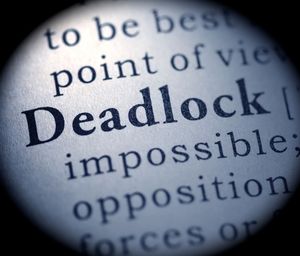By Dr. Ken Broda Bahm:
As the second penalty-phase trial for Jodi Arias ended last week with a hung jury and a mistrial, the word from the jury, 11 of 12 of them, was frustration. “We feel like we failed,” one said to ABC15, and the group issued an apology to the family of murder victim Travis Alexander. A hung jury may be a loss or a win. In this case, it’s a win for the Defense, since Arias’ life will now be spared and the sentence — life, with or without the possibility of parole — falls to the judge. More broadly, though, a hung jury is often seen by society as a loss for the system as a whole. The reaction on social media, for example, was swift and predictable. “The justice system failed” was a common critique, as many in Arizona and around the country took to Twitter and Facebook to criticize the judge, the holdout juror, the prosecution, as well as the capacity for jurors to deliver this kind of punishment.
Despite the response in this case, hung juries are not the sign of a broken jury system. Cases can hang for good reasons and, in many cases, a mistrial doesn’t necessarily mean that justice has been denied. Given that the death penalty — as Jeffrey Toobin pointed out to Nancy Grace — is about the most imperfect method of delivering justice imaginable, the result can also be viewed as an instance of the system working. Capital punishment, if it should exist at all, should carry a very high burden on the state. If the prosecution, even after “death qualifying” the jury and presenting its case, still fails to convince each and every juror, then a non-answer can be the right answer. On the day of the verdict, I was interviewed by ABC15 in Phoenix and made a few comments in that vein. The video is included below, and for this post, I want to add a some additional context to expand on those thoughts.
The Interview: Three Causes
The quick segment was used to flesh out the answer to the anchor’s question of why juries hang. It was a last-minute interview, conducted via Skype from my office, which is why the video quality is a little dodgy. The study I am referring to was a project of the National Center for State Courts. The study is discussed here (Mott et al., 2003) and includes a longer academic treatment here (Hanford-Agor & Hans, 2003).
(If the video does not show up or does not play, click here to view it).
A Few Additional Thoughts
I suppose it is in the nature of broadcast news, but it is always a little disconcerting when a 20-minute conversation gets boiled down to just a 30-second sound bite. Here are some additional thoughts.
Hung Juries Are Still Relatively Rare
A hung jury can get a lot of attention, especially when it marks the conclusion of a high-profile case. But generally speaking, hung juries are still rare. The NCSC study I refer to also shows that hung juries in state-level criminal felony cases is only 6.2 percent. In federal cases, that number shrinks to 2.5 percent. And many of those cases are successfully retried to a verdict.
The Reason is Key
As previewed in the interview, the NCSC study found three reasons to explain most hung juries:
-
- Ambiguous evidence: Juries, understandably, hang more often when the evidence is rated as more ambiguous.
- Poor group dynamic: Conflict, polarization and other group differences can prevent the jury from reaching a decision.
- Attitudes on legal fairness: Nullification occurs where one or more jurors believe that the law or the patterns of prosecution are unfair.
In the first and third cases, when the evidence is ambiguous or when the prosecution violates jurors’ views of basic fairness, the result of a hung jury is most understandable. When it stems from a failure of group cohesion, on the other hand, it is more regrettable. The write-up of the NCSC study in Caseload Highlights for that reason, contains a few recommendations on reducing that species of hung jury by having the courts offer more guidance on deliberation process and conflict resolution.
Thorough Voir Dire is Essential
The final reminder is that both sides should do everything within reason and law in order to fully know their panel. One of the former Arias jurors, for example, commented that the one holdout juror claimed to have seen parts of the Lifetime original movie, and felt that the actual Jodi Arias was not as bad as the monster portrayed on TV. Several sources have also raised the question of whether that juror’s ex-husband had been prosecuted by Juan Martinez, the prosecutor in the Arias trial. At this stage, the stories are driven by internet chatter, and may or may not bear out. But in all cases, the more you know, the better.
The parties and the public generally want a decisive and uniform result. And our still-human jury system will deliver one far more often than not. But not always.
______
Other Posts on Jury Group Dynamic:
- See the Process and Not Just the Product in Deliberation
- Note the (Small) Difference a Female Jury Can Make
- Pay Attention to Minority Influence
______
Hans, V. P., Mott, N. L., & Munsterman, G. T. (2002). Are hung juries a problem?. Williamsburg, VA: National Center for State Courts.
Video Credit: ABC15, used with permission. Photo Credit: 123rf.com, used under license
